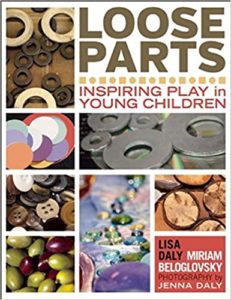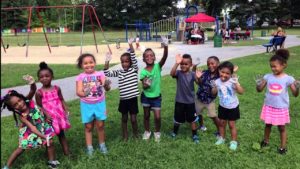Fixed equipment are structures that children play on. Loose parts are things that children can play with. Loose parts found in nature include sticks, mulch, pebbles, logs or “tree cookies.” Other loose parts include rope, canvas or any kind of multiple items of the same type, such as empty thread spools, wooden blocks, hula-hoops and even toilet plungers. Loose parts encourage children to create, solve problems and work cooperatively. They provide the opportunity for children to have a degree of agency over their play environment and not simply respond to what is provided.
 Loose Parts: Inspiring Play in Young Children created an international phenomenon that brought the concept of Loose Parts to the conversations on play and learning. This book has been translated into multiple languages and has won several awards and recognitions. Including: Tillywig Award Winner 2015, Brain Child.
Loose Parts: Inspiring Play in Young Children created an international phenomenon that brought the concept of Loose Parts to the conversations on play and learning. This book has been translated into multiple languages and has won several awards and recognitions. Including: Tillywig Award Winner 2015, Brain Child.
The hundreds of inspiring photographs showcase an array of loose parts in real early childhood settings. And the overviews of concepts children can learn when using loose parts provide the foundation for incorporating loose parts into your teaching to enhance play and empower children. The possibilities are truly endless.

Check out this video about how ProvidencePlayCorps brings popup play environments to urban communities - using lots of loose parts!

Loose Parts for Children with Diverse Abilities - article
Article based on excerpts from Chapter 1: Beloglovsky, Miriam. 2022. Loose Parts for Children with Diverse Abilities. Minnesota: Redleaf Press.